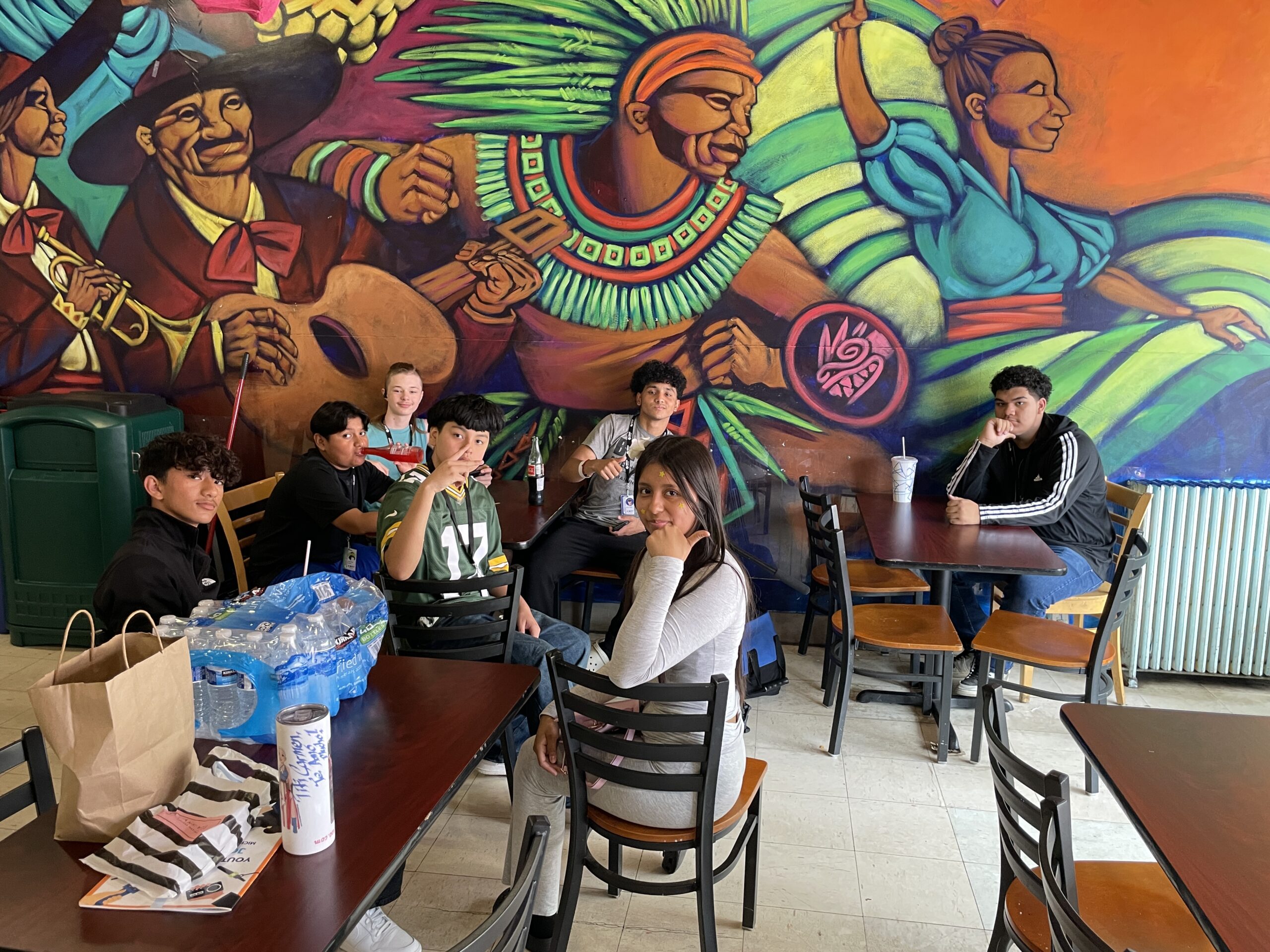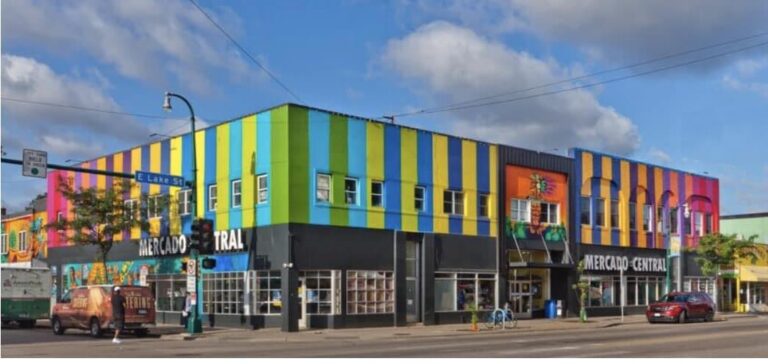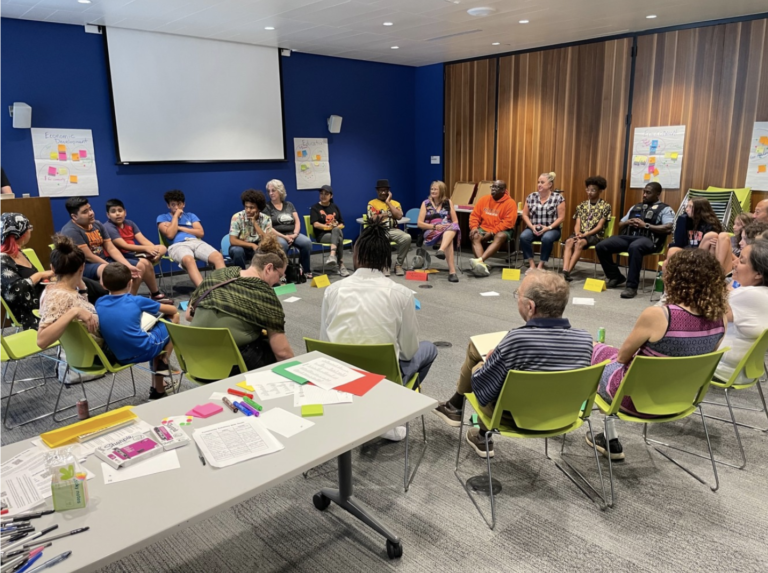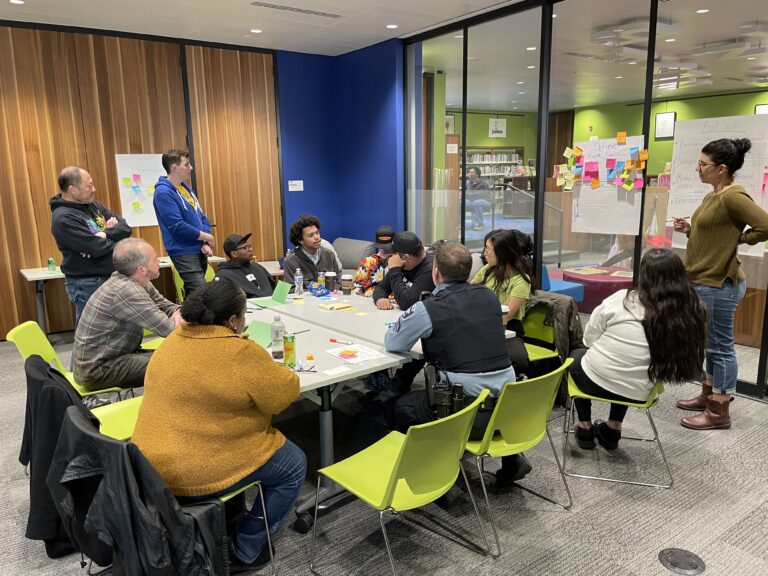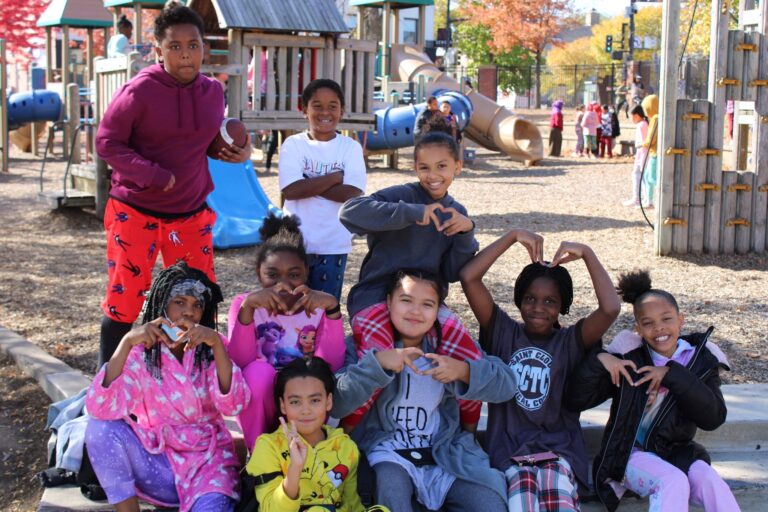Community Journalism Can Change the World
The United States is divided, perhaps more than it’s ever been.
Mass media partisan journalism is one reason. It has created problems and gotten us to a precarious place. But there is a solution. Community-centered journalism.
Community-centered journalism — also known as community engagement journalism, community solutions journalism, or just plain community journalism — involves journalists working with their community to create journalism that responds to their needs.
Community journalism builds relationships with communities by creating solutions and has many benefits:
✅ Strengthens communities
✅ Increases public trust
✅ Produces revenue
Community journalism is exactly what we need at this moment in history. We are living in an era of fear, loathing and distrust. To really understand these times, we have to be on the ground inside communities and provide information that can help make the lives of people better.
Information is power, and community journalism can inform citizens what’s happening in their cities and how public policy, legislation, and community action affect their everyday lives. They can provide civic resources, service journalism, and more.
Many nontraditional news organizations around the country are listening to their communities, and they are giving their communities what they need through innovative community journalism. These local and/or ethnic news organizations include El Tímpano in the Bay Area, LAist in Southern California, Sahan Journal and Project Optimist in Minnesota, Outlier Media in Detroit, Documented and Gothamist in New York City, and NotiVisión Georgia and Pasa La Voz in Georgia, to name a few. They often provide news in forms besides websites, such as text messaging (SMS), WhatsApp, Facebook, Instagram, podcasts, video, community events, newsletters, and even print.
Nontraditional news organizations are serving underserved audiences in Indigenous, Black, Latino, Asian, immigrant, and rural communities. They are building enduring relationships with their communities and helping them.
For example, in early July, Sahan Journal published the first article in a series investigating the racial disparities in Minnesota’s opioid epidemic. Instead of documenting overdose deaths just by race (say, Black or Asian), they looked at five years of data to see if they could find patterns by community (such as Somali or Karen). Over seven months, they requested 240,000 death certificates from the Minnesota Department of Health and learned which communities suffer the most.
From 2019 to 2023, opioids have killed more than 4,000 people in Minnesota, and “Native Americans were at least 15 times more likely to die from opioid overdoses than white people. Somali Minnesotans were at least twice as likely to die from opioid overdose than their white counterparts. Latino Minnesotans were 1.5 times more likely to suffer fatal overdoses.”
In-depth data helps communities gain a deeper understanding of the problem so they can help their community members. Research shows that culturally specific treatment is most effective.
As Sahan Journal reported:
“If more people understood how opioids have devastated their people, according to Somali, Native American, and Southeast Asian leaders, communities could secure more funding and resources. Accurate data, they say, will convince people to pay attention and find solutions.”
This type of community journalism can do more than just strengthen communities. It can save lives. This is the power of community journalism.
Project Optimist, led by Nora Hertel, is another media outlet seeking to help people. Their mission is “to engage residents of greater Minnesota to help them collaborate across common divides, tackle seemingly intractable problems and grow more optimistic about the future of their communities, region and world. Project Optimist does this by tapping Minnesota’s creative and independent talent to produce solution-focused stories and local art to inform and inspire. We provide training and spur conversations in support of media literacy, community problem solving, community journalism and democracy.”
They produce original journalism on the environment, business, social issues and art. They also lead dialogue events and provide consulting and training, helping nonprofits and businesses tell their stories and helping newsrooms tell more solution- and community-focused stories.
This is how the next generation of media companies will be. While they still will have traditional models such as advertising and subscriptions, they also will have more nontraditional models that offer adjacent products or services that lower customer acquisition costs, media industry journalist Simon Owens reports.
Owens shared the story of Craig Fuller, the founder of FreightWaves, a media company that sells a data product, who also has a side hustle of buying hobbyist magazines and then selling products and services to hobbyists who read those magazines.
“For instance, he bought Flying Magazine, an outlet geared toward people who own private planes and jets,” writes Owens. “Then he bought a large plot of land in Tennessee, built a small airport at the center of it, and began selling parcels of land to flying enthusiasts who want to build homes around this airport. … Fuller essentially owns a real estate company that markets itself with a magazine.”
Community news organizations could follow a similar model on a smaller scale with community journalism and other local businesses. There are more existing nontraditional community news sources. They are out there just waiting to be found.
It can no longer be business as usual for the media business. The creator economy means journalism needs to keep evolving. One way to do this is by asking community-centered questions and engaging the community on their terms. What services and products do they need? Then, deliver news and information around these products and services.
Engagement takes time. It’s worth the effort. There is a business case for engagement. A 2023 independent study done by Dr. Talia Shroud and the Center for Media Engagement at the University of Texas at Austin, “Curbing the decline of local news by building relationships with the audience,” found that listening to and engaging with communities translated into much-needed revenue for local news organizations.
Trust is a differentiator that can create value in today’s media landscape. Journalists can earn trust by providing value for communities, which means giving them what they need to make their lives better.
Communities need journalism. Community journalism can change the narrative from “it’s all bad” to “we turned this bad into good.”
Research shows that negativity is four to seven times more powerful than positivity. We are hardwired for negativity. This negative bias is why we focus more on “bad things” to make sense of our lives and the world around us. The negative grabs our attention. Traumatic experiences stay with us.
Negative information outweighs positive data. All this negativity influences our thoughts, feelings, and decisions. We have to fight these negative feelings.
The current traditional news ecosystem does not help. It is not designed to help people.
Everywhere you turn, there is bad news, doomsday headlines, problems, complaints. Whether it’s traditional news channels, social media, the internet, neighborhood conversations, or everyday interactions, it’s hard to avoid negativity.
Community journalism, powered by youth, can be a vehicle for that change. By listening to the community, we can channel the negative energy of communities in a positive direction with youth. This is why the Strong Mind Strong Body Foundation started the Youth Community Journalism Institute. Our mission is to provide more access to journalism opportunities and teach youth how to be changemakers.
If we show the next generation how journalism can catalyze change and create solutions, they can lead the way.
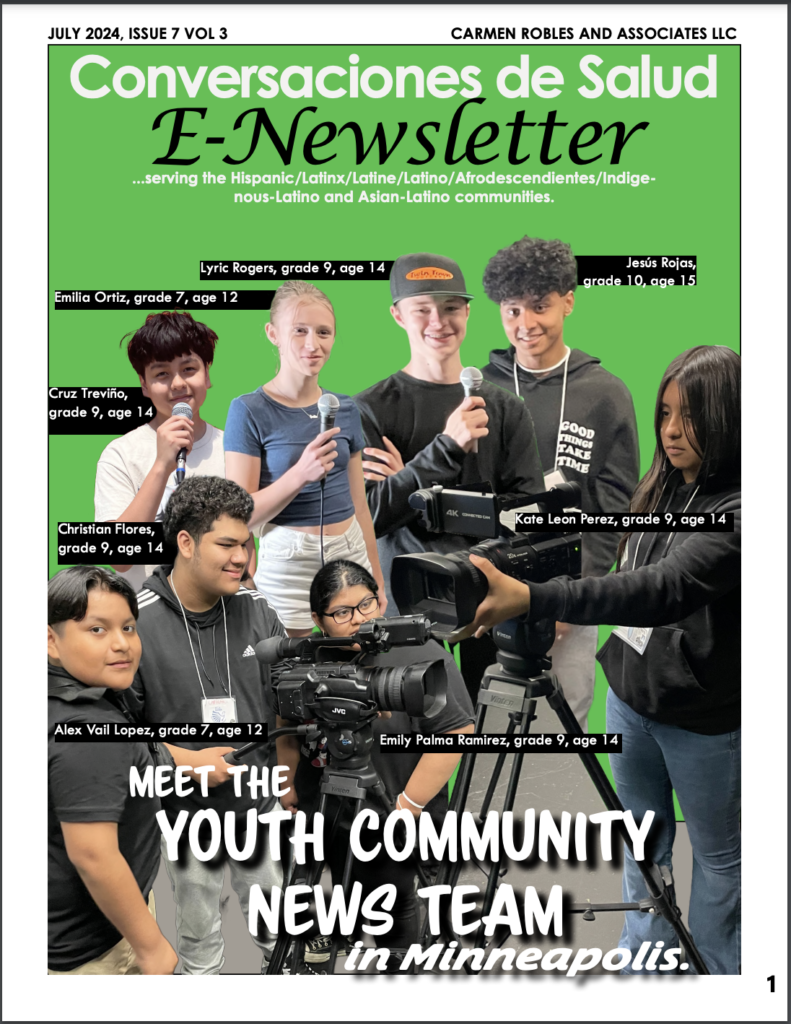
This summer, students participated in a youth community journalism microinternship program. We launched the program with Carmen Robles and Associates LLC. The program took place at SPEAK MPLS, a community media center in Minneapolis and Strong Mind Strong Body partner organization. We had nine youth, ages 12-15, and taught the fundamentals of community journalism, including reporting, storytelling, interviewing, multimedia journalism, video production, field reporting, and live studio production.
We started with seven youth, and students in the class recruited two more youth to join us. That is a sign that youth are engaged. They want more community journalism opportunities, and we plan to provide them.
The youth community journalism program culminated in a live news show produced by students in front of a live studio audience and broadcast on a SPEAK MPLS cable TV channel. After that, we plan to continue with a monthly youth community news show.
As part of the microinternship, youth also participated in the Mercado Central Local Journalism Project, another initiative of the Youth Community Journalism Institute.
The Mercado Central is a thriving Latino marketplace located in Minneapolis that is celebrating its 25th anniversary this summer. Our journalism project is exploring the past, present, and future of Mercado Central, reframing the immigration narrative, and educating the public on how anyone can be an entrepreneur and asset-based community development can add value to any community.
We had our first field reporting day at Mercado Central. Students spoke to small business owners and Mercado staff. The youth talked with lawyers, security guards, florists, butchers, store owners who sell shoes, boots, hats, health goods, religious artifacts, and more.
Youth learned about the cooperative of the market and how everyone at Mercado is proud to be part of the market and a great future for families and the Hispanic community.
Carmen Robles summed up the experience:
“What a spectacular day. Those jovenes are exceptional. Thank you for creating dialogue around solutions. For bringing Minneapolis out of the darkness and into the light through the delivery of community news, with youth at the helm of 21st-century global power of communication. The stores loved the youth, they loved telling their stories and sharing the victory of pursuit, patience, planning, the victory of ganas. Today has been a very powerful day for me. I saw firsthand, up close and personal, the power of teamwork and problem solving en jovenes. No script necessary. The transformative stages in the beauty of youth is a blessing to witness. … This is a brilliant project. Build it and they will come.”
It’s time to flex our humanity with every issue viewed as a negative. Together, we can do more than change the narrative. We can change the world.
This starts at home in our communities. Community journalism can build relationships, meet needs, break down barriers, bring people together, and create solutions.
We are already seeing progress. One of our youth journalism students said she wants to be the first person in her family to go to college and graduate. She wants to be an immigration lawyer and help create solutions for the immigration problems that exist today, such as the difficulty of getting jobs for people who arrive in the U.S. from other countries.
Our goal is to get youth community journalism programs in all middle schools, high schools, community colleges, and universities across America. We want to create a trade school model with community media centers in every county in the country and spark a nationwide Community Journalism for All movement.
Community journalism for all can create justice for all. With youth and a reimagination of journalism, we can turn any negative into a positive.
This article was first published on LinkedIn in The Community Builder.
